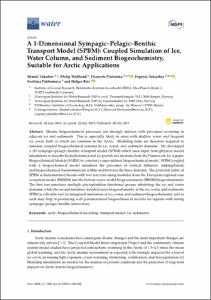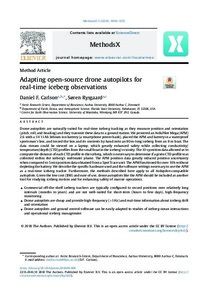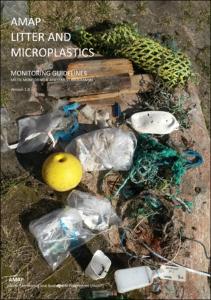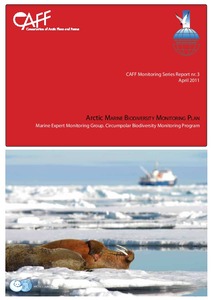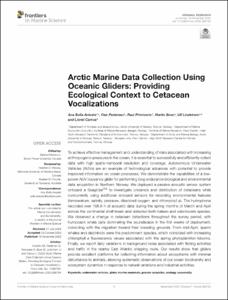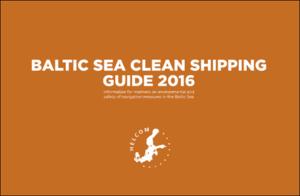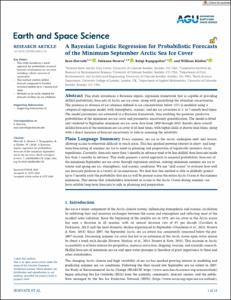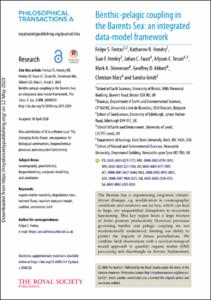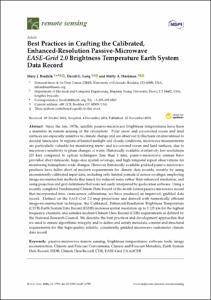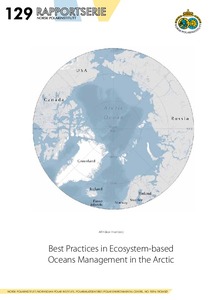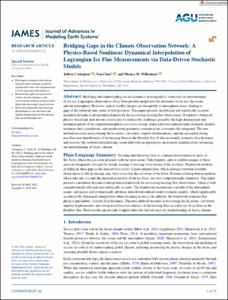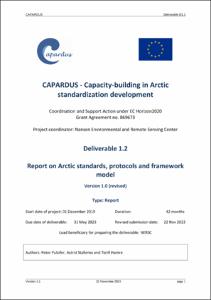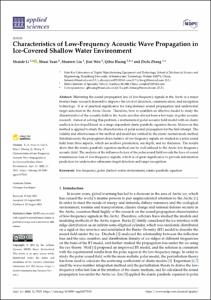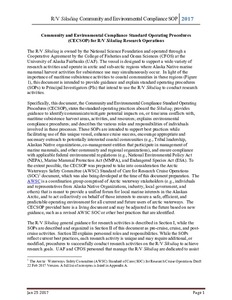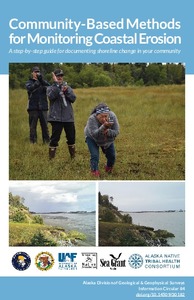Browsing CAPARDUS Practices by Title
Now showing items 1-20 of 147
-
A 1-Dimensional Sympagic-Pelagic-Benthic Transport Model (SPBM): Coupled Simulation of Ice, Water Column, and Sediment Biogeochemistry, Suitable for Arctic Applications.
(2019)Marine biogeochemical processes can strongly interact with processes occurring in adjacent ice and sediments. This is especially likely in areas with shallow water and frequent ice cover, both of which are common in the ... -
ACCESS climate data management.
(2017)Building on achievements and experience gained through the EU project DAMOCLES and international data management during the International Polar Year, ACCESS, data management was implemented using the same platform as used ... -
Accounting for Uncertainties in Biodiversity Estimations: A New Methodology and its Application to the Mesopelagic Sound Scattering Layer of the High Arctic.
(2022)Measures of biological diversity (biodiversity) are important for monitoring the state of ecosystems. Several indices and methods are used to describe biodiversity from field observations. Marine faunal biodiversity is ... -
Adapting open-source drone autopilots for real-time iceberg observations.
(2018)Drone autopilots are naturally suited for real-time iceberg tracking as they measure position and orientation (pitch, roll, and heading) and they transmit these data to a ground station. We powered an ArduPilot Mega ... -
AMAP Litter and Microplastics Monitoring Guidelines. Version 1.0.
(Arctic Monitoring and Assessment Programme, Tromsø, Norway, 2021)Purpose of the guidelines The purpose of the guidelines is to review existing knowledge and provide guidance for designing an Arctic monitoring program that will track litter and MP. The topics of litter, plastic pollution, ... -
Arctic corridors and northern voices project: methods for community-based participatory mapping for low impact shipping corridors in Arctic Canada.
(2020)Documenting Inuit and local knowledge is critical to its consideration within policy discussions around Arctic shipping; especially considering the rapid increase in ship traffic due to reductions in sea ice and climate ... -
Arctic Marine Biodiversity Monitoring Plan (CBMP-MARINE PLAN).
(CAFF International Secretariat, Akureyri, Iceland, 2011)Arctic biodiversity is under growing pressure from both climate change and resource development, requiring both managers and users to have access to more complete information to help them make timely and informed conservation ... -
Arctic Marine Data Collection Using Oceanic Gliders: Providing Ecological Context to Cetacean Vocalizations.
(2020)To achieve effective management and understanding of risks associated with increasing anthropogenic pressures in the ocean, it is essential to successfully and efficiently collect data with high spatio–temporal resolution ... -
Baltic Sea Clean Shipping Guide 2016 : Information for mariners on environmental and safety of navigation measures in the Baltic Sea.
(HELCOM, Helsinki, Finland, 2016)This information publication aims to give you a general overview of the regional environmental and safety of navigation measures applied in the Baltic Sea to maritime traffic. The focus is on commercial shipping which ... -
A Bayesian Logistic Regression for Probabilistic Forecasts of the Minimum September Arctic Sea Ice Cover.
(2020)This study introduces a Bayesian logistic regression framework that is capable of providing skillful probabilistic forecasts of Arctic sea ice cover, along with quantifying the attendant uncertainties. The presence or ... -
Benthic-pelagic coupling in the Barents Sea: an integrated data-model framework.
(2020)The Barents Sea is experiencing long-term climate-driven changes, e.g. modification in oceanographic conditions and extensive sea ice loss, which can lead to large, yet unquantified disruptions to ecosystem functioning. ... -
The Best of Both Worlds: Connecting Remote Sensing and Arctic Communities for Safe Sea Ice Travel.
(2020)Northern communities are increasingly interested in technology that provides information about the sea ice environment for travel purposes. Synthetic aperture radar (SAR) remote sensing is widely used to observe sea ice ... -
Best Practices in Crafting the Calibrated, Enhanced-Resolution Passive-Microwave EASE-Grid 2.0 Brightness Temperature Earth System Data Record.
(2018)Since the late 1970s, satellite passive-microwave brightness temperatures have been a mainstay in remote sensing of the cryosphere. Polar snow and ice-covered ocean and land surfaces are especially sensitive to climate ... -
Best Practices in Ecosystem-based Oceans Management in the Arctic.
(Norsk Polarinstitutt, Tromso, Norway, 2009)The aggregate effects of multiple uses of the oceans – fishing, transportation, petroleum development, waste disposal, etc. – call for an ecosystem-based approach to oceans management. The need for oceans management ... -
Bridging Gaps in the Climate Observation Network: A Physics-Based Nonlinear Dynamical Interpolation of Lagrangian Ice Floe Measurements via Data-Driven Stochastic Models.
(2022)Modeling and understanding sea ice dynamics in marginal ice zones rely on measurements of sea ice. Lagrangian observations of ice floes provide insight into the dynamics of sea ice, the ocean, and the atmosphere. However, ... -
CAPARDUS Deliverable 1.2 Report on Arctic standards, protocols and framework model, Version 1.0 (Revised).
(Nansen Environmental and Remote Sensing Center, Bergen, Norway, 2023)Standards can act as common language and practices among actors when aiming to share and use observing systems, data, ensure safety, and many other activities in the Arctic. Equipment manufacturers, observing programs, ... -
Characteristics of Low-Frequency Acoustic Wave Propagation in Ice-Covered Shallow Water Environment.
(2021)Mastering the sound propagation law of low-frequency signals in the Arctic is a major frontier basic research demand to improve the level of detection, communication, and navigation technology. It is of practical significance ... -
The Coastal Observing System for Northern and Arctic Seas (COSYNA).
(2017)The Coastal Observing System for Northern and Arctic Seas (COSYNA) was established in order to better un derstand the complex interdisciplinary processes of northern seas and the Arctic coasts in a changing environment. ... -
Community and Environmental Compliance Standard Operating Procedures (CECSOP) for R/V Sikuliaq Research Operations.
(University of Alaska Fairbanks, College of Fisheries and Ocean Sciences, Fairbanks, AK, 2017)The R/V Sikuliaq is owned by the National Science Foundation and operated through a Cooperative Agreement by the College of Fisheries and Ocean Sciences (CFOS) at the University of Alaska Fairbanks (UAF). The vessel is ... -
Community-based methods for monitoring coastal erosion: a step-by-step guide for documenting shoreline change in your community.
(Alaska Division of Geological & Geophysical Surveys, Fairbanks, Alaska, 2019)This booklet provides comprehensive instructions for implementing three community-based shoreline monitoring systems, with all instructions designed to be completed by local residents. Tips for selecting monitoring sites, ...
 Repository of community practices in Ocean Research, Applications and Data/Information Management
Repository of community practices in Ocean Research, Applications and Data/Information Management
